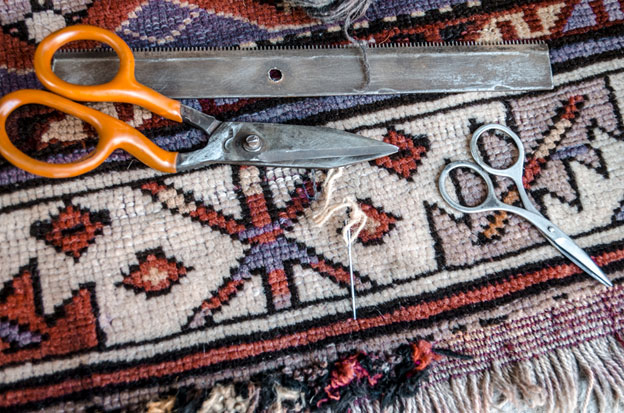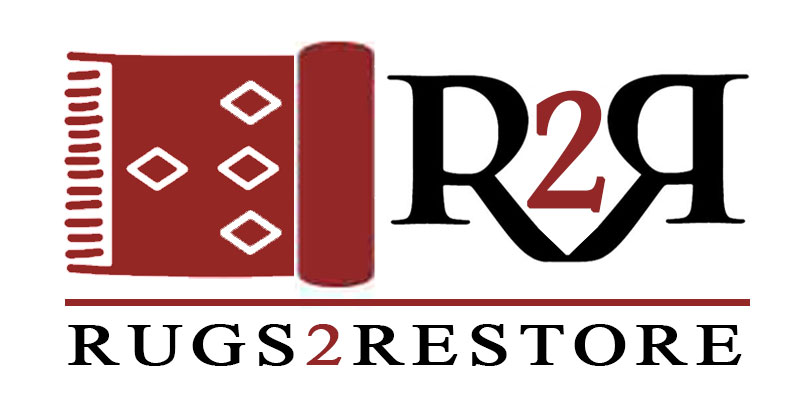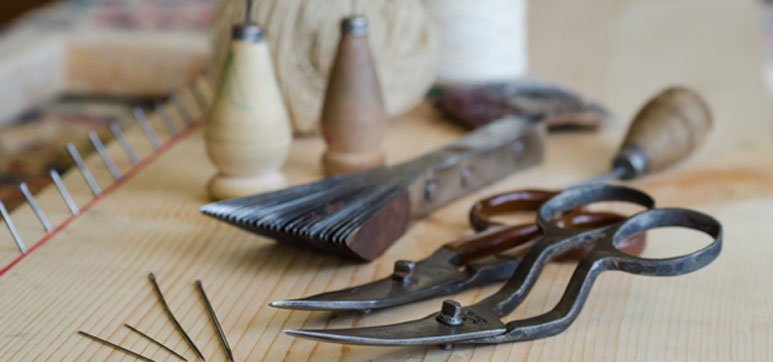Welcome to the fascinating world of Persian rugs restoration services! The art of rug restoration is a delicate and intricate process that requires the expertise of skilled professionals. Antique rugs are not just pieces of decoration, but they hold significant historical and cultural value. Restoring these rugs to their former glory is not only an art but also a responsibility to preserve our cultural heritage. If you’re someone who loves antiques or has a preference for the history thereof, you are surely cognizant of the remarkable significance and estimable worth attributed to an antique rug.
In this article, we’ll explore the art of rug restoration and how skilled artisans are able to repair and rejuvenate antique rugs. From the initial inspection to the final touches, we’ll take you through the entire restoration process step by step.
You’ll learn about the various techniques and tools used in rug restoration and gain insight into the level of expertise required to restore an antique rug successfully.
Whether you’re a rug enthusiast or just curious about the art of restoration, this article will give you a new appreciation for the beauty and craftsmanship of antique rugs. So please sit back, relax, and come forth with us into the realm of rug restoration.
The Importance of Rug Restoration
Antique rugs are more than just functional floor coverings; they are intricate works of art that tell a story. They often have cultural and historical significance, representing the artistic styles and techniques of a particular time and place. Antique rugs are also valuable investments, increasing in value over time.
However, even the best rugs can deteriorate over time due to natural wear and tear, water damage, or moth infestation. Without proper care, antique rugs can become threadbare, torn, and stained, losing their beauty and value. That’s where rug restoration comes in.
Restoring an antique rug preserves its beauty and history while also protecting its value. Rug restoration allows the rug to be enjoyed for generations, ensuring its cultural and historical significance is not lost.
The Process of Restoring An Antique Rug

Restoring an antique rug is a highly specialized and intricate process that requires a deep understanding of the rug’s materials, construction, and history. From the initial inspection to the final touches, each step of the restoration process is carefully planned and executed by skilled artisans to ensure that the rug is restored to its original beauty and quality. Here is a breakdown of the process of restoring an antique rug:
Step 1 – Initial Inspection: The Decisive Inception Stage in Rug Restoration
The initial inspection is a crucial step in the rug restoration process. The restorer/renovator will carefully examine the rug to assess its comprehensive condition, detecting any sections of damage or wear. Moreover, the renovator will also establish the rug’s antiquity, origin, and material since this knowledge is crucial in selecting the appropriate restoration techniques. Additionally, the renovator may deploy a magnifying glass or other equipment to scrutinize the rug’s fibers and knots, verifying that they are aware of the rug’s creation and any prior repairs.
Step 2 – Cleaning: The Foundation of Rug Restoration
Before any restoration work can begin, the rug must be thoroughly cleaned. The cleaning process is imperative in order to eradicate any unwanted entities, such as dirt, dust, or debris, that may exacerbate the rug’s deterioration if left untreated. The delicate fibers comprising antique rugs necessitate the implementation of specialized techniques to guarantee their unscathed preservation. Depending on the kind of rug and the extent of the damage, these techniques may encompass methods such as dusting, washing, and spot-cleaning. In some instances, specialized cleaning solutions may also be utilized to abolish unsightly stains and undesirable odors, ensuring that the rug is restored to its original beauty.
Step 3 – Repair: Restoring the Rug’s Structural Integrity
Once the rug is clean, the restorer will begin repairing any areas of damage. This can include reweaving the rug, replacing missing or damaged fringe, and repairing holes or tears. Skilled artisans use traditional techniques to ensure the repairs are seamless and do not detract from the rug’s overall beauty and value. The restorer may also stabilize any weak areas of the rug to prevent further damage, ensuring that the rug’s structural integrity is restored.
Step 4 – Restoration: Enhancing the Rug’s Beauty and Value
After the repairs are complete, the restorer will begin the restoration process. This can include dyeing the rug to restore its original color or highlighting specific areas of the rug to bring out the design. The restorer may also add new fringe to Persian rug or reshape the edges to ensure that the rug looks as good as new. The restoration process is specifically designed to increase the rug’s exquisiteness and worth, thus allowing it to be admired by future generations.
Step 5 – Finishing: The Final Touches of Rug Restoration
Once the restoration work is complete, the rug will be finished with a final touch. This can include trimming any loose threads or fibers and brushing the pile to ensure that the rug is soft and smooth to the touch. The restorer may also apply a protective coating to the rug to prevent future damage. The finishing touches are essential to ensure that the rug is in perfect condition and ready for use or display.
Step 6 – Inspection: Ensuring the Highest Quality Restoration Work
Finally, the restorer will inspect the rug one final time to ensure that the restoration work is of the highest quality. They will look for any areas that may need further attention and make any final adjustments to ensure the rug is in perfect condition. The inspection process ensures that the rug is restored to its original beauty and can be enjoyed for years.
The restorer will provide care instructions to the rug’s owner to ensure the rug remains in good condition. Proper care can help prevent future damage and extend the life of the restored rug.
Conclusion
Restoring an antique rug is a complex and delicate process that requires a high level of skill and expertise. However, the end result is a beautiful and valuable work of art that can be enjoyed for generations to come. Rug restoration preserves the history and cultural significance of antique rugs while also protecting their value. It is an art form that deserves to be celebrated and appreciated.

